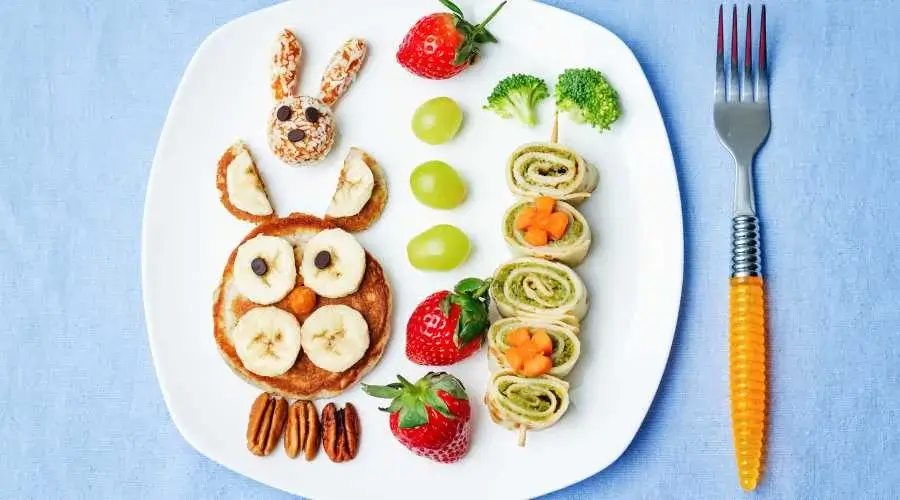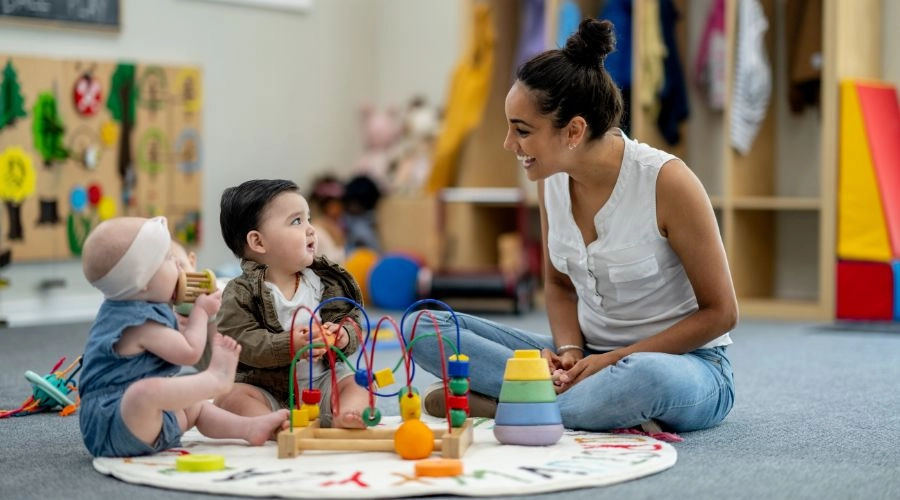The preschool years are crucial for growth, especially for the development of the brain. Preschoolers’ brains experience quick and significant changes as a result of heightened neuroplasticity (the formation of new neural connections), which accelerates cognitive growth. Memory, attention, verbal communication, and motor development all take place during this crucial time in brain development. According to studies, 95% of the brain’s volume is already developed by the age of six. Additionally, preschoolers, especially in terms of food and eating habits, become much more independent at this period.
The physical development of a child is influenced by nutrition. The growth and development of the brain, organs, and body depend on nutrients. Every child is born with the capacity to learn; however, how and what they learn depends on their surroundings, which includes their diet. Specific nutrients are needed by the brain, including folic acid, iron, zinc, and healthy fats, to mention a few. Developmental deficiencies, learning difficulties, a higher risk of sickness, exhaustion, and a delay in physical growth have all been connected to malnutrition. Is your child receiving the care they require?
The Perfect Lunch Needs Preparation
You can keep an eye on what your kids eat and make sure they get the nutrients they need by packing their lunch and snacks. The newest “food pyramid” is called MyPlate, which provides examples of how to fill your plate with the healthiest foods at each meal. Here are some suggestions for creating the ideal lunch for your kid:
Protein
The building blocks of our brain and body are made of protein. The primary component of the meal should be protein. Lean and lightly processed proteins are preferred. Several foods high in protein include:
- Chicken breast, turkey breast, meats, and fish
- Cheese and dairy
- Legumes (ex: lentils and chickpeas)
- Broccoli (vegetable with the highest protein!)
- Eggs
- Seeds and nuts
- Oats
Healthy Fats
For a child’s developing brain, healthy fats are essential! A preschooler’s diet should contain roughly 30% healthy fats. It might be challenging to introduce toddlers to omega 3 fatty acids from fatty fish and fish oil, but starting young can help them develop a palate for a varied diet high in nutrients. Limit harmful fats with little nutritional benefit, such as those found in pizza, chips, and vegetable oils. Healthy fats consist of:
- Nuts
- Avocado
- Whole milk
- Fish and meats
- Cooking with healthy oils (ex: extra virgin olive oil, avocado oil, or coconut oil)
Vegetables
One of the most underestimated foods in modern American diets may be vegetables. According to studies, eating a vegetarian diet can lower your chance of developing heart disease, as well as your need for insulin if you have Type 2 diabetes in adults. A fantastic method to include nutritious, healthful foods in your lunch is with vegetables.
Limit Sugar & Processed Food
Try to replace juice with milk or water in your lunchbox. You may easily omit the gushers and instead pack a few strawberries for a sweet treat because there is enough of sugar in breads, cereals, and even naturally occurring sweets like fruits.
Take note to also make them eat less junk or processed food products. Yes, they are practical, but if you want to give your child the highest nutrition per calorie, choose minimally processed foods!
Portion Control
Despite their continual growth, youngsters can still overeat and put themselves at risk for diabetes and obesity. Preschoolers should be allowed to eat when they are hungry rather than being coerced into finishing their dishes. Try to provide them less food on their first visit and encourage them to order seconds if they so desire.
More Water & Snacks
In order to support their slow-moving but consistent growth, kids need snacks in between meals to maintain their energy levels. Remember to bring food, especially for after school!
Our classrooms at Heritage are extremely diverse, especially during lunchtime! We appreciate it when parents give their kids culturally diverse and wholesome snacks and meals. When kids see these interesting and nutrient-dense food options like seaweed, hummus, and stuffed grape leaves, they are enthralled.
Think about using a divider-style lunchbox (a “bento box”) to serve as a reminder of portions and variety. An illustration of a lunchbox might resemble this:
- Snack: a whole-wheat sandwich with half sunflower butter and half honey.
- Lunch: Cubes of chicken breast, cheddar cheese, 1/2 cup of rice, and 3 strawberries. Keep in mind to chop food into bite-sized pieces that are big enough to chew but still easy to swallow to avoid choking.
- Hard-boiled egg, carrots, hummus, and whole-grain pita chips for an after-school snack.
The whole family may eat healthier over the week by meal preparation, according to this advice for working parents. Pre-chopped celery, grilled chicken breasts, hard-boiled eggs, and hummus can all be made in large batches over the weekend and stored in the fridge for a few days of stress-free lunches.
*Advice for fussy Eaters: Introduce one new food at a time, beginning with foods your fussy eater likes. Before introducing another food, give your youngster some time to grow used to the new one. Allowing your youngster to select produce at the grocery store will give them the impression that they are making the choice. Have family dinners as a time to catch up, and serve kids the same meals as the adults. Remember to make each new dining experience enjoyable.
In Conclusion
Bring your healthy eating habits to the dinner table; healthy eating doesn’t have to end at noon! After a hard day, dinners may be a wonderful opportunity to reconnect with your family. They can also encourage everyone to eat well. Keep your attention on your dinner; put your cell phone and video games away, and avoid watching TV while you’re eating. Dinner should be served in a casual setting where everyone eats together and kids are not allowed to run off with the food. Additionally, it lowers the chance of choking and helps kids to concentrate on their food. Incorporate a Jumpin’ Jax-inspired lesson plan into your dinnertime routine to encourage good dining manners.






